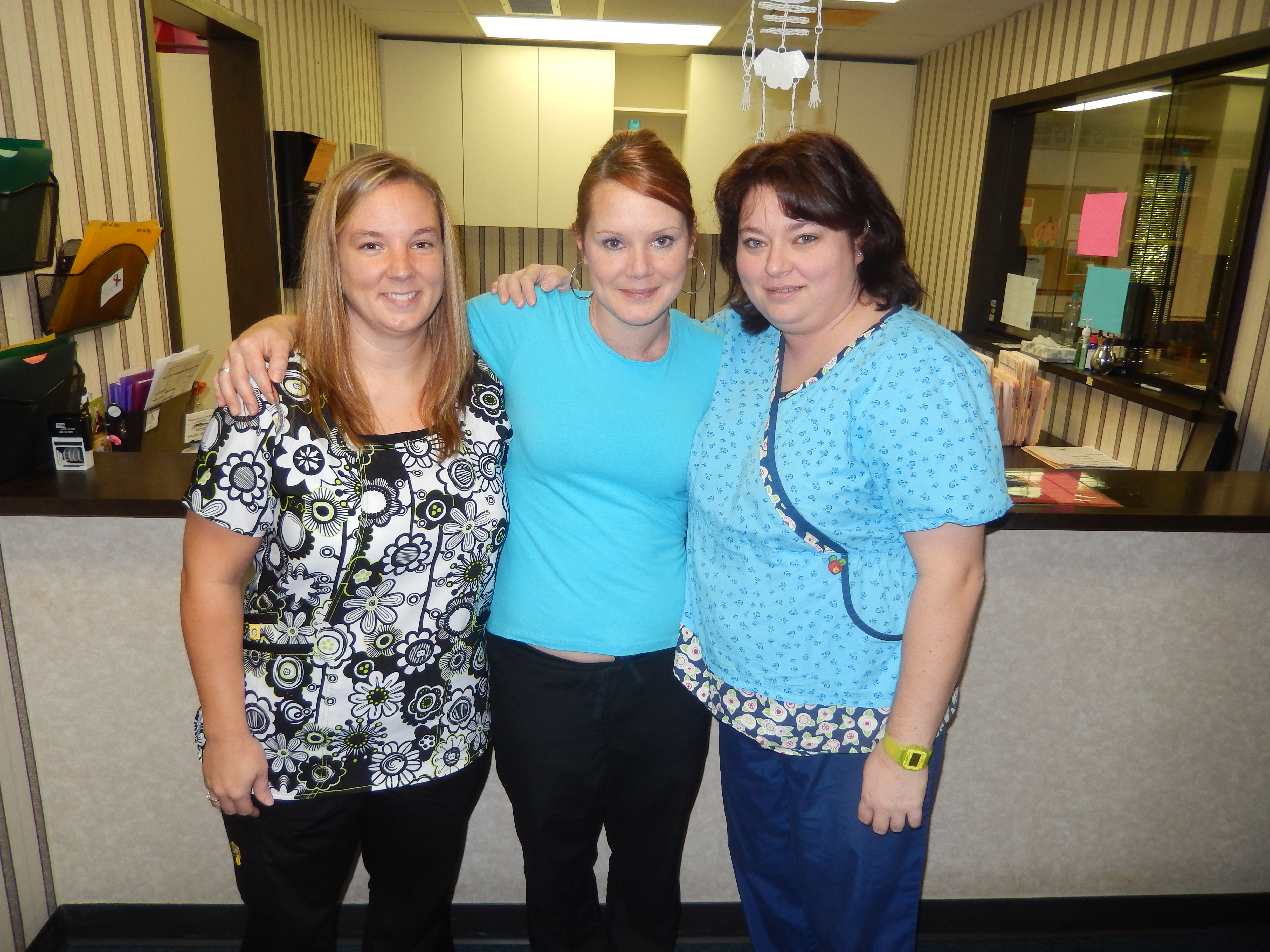It has been said, that the way we are dressed can influence the way we work and how we are perceived by others. This point was made when my colleague and fellow medical etiquette trainer, Darlene Das in Hendersonville, N.C. took her husband’s office staff from looking unremarkable to looking great with some changes in the way the entire office dressed.
She and the staff shared their before and after photos. Looking good, Darlene. Darlene can be found at www.today’setiquette.com.
Before…..
After…..

Just as in any other arena, the dress for medical people has changed dramatically over the years. The traditional white uniform with white hose and a nursing cap is rarely seen anymore. Those crisp white uniforms have given way to “scrubs.”
While scrubs may be more comfortable than uniforms of the past, they make it more difficult to look tidy and to identify your position in a hospital or office. So, a good way for the public to know if you are nursing staff or cleaning or dietary staff is to color code each department and post the color key in patient’s rooms and in patient info material.
One of the most important ideas of uniforms is to let the public know who you are, that you are at work, not at play, that you are not some stranger off the street who comes into a patient room in the middle of the night. In short, you should look like what you do and who you are.
Here are some basic tips for dressing in the medical arena today:
- Establish well-defined dress codes and enforce them.
- Be clean and well-groomed. Shorter fingernails are more professional and more hygienic. Save nail art and dramatic nail color for social situations.
- Keep hair up and out-of-the-way. And keep make-up subtle.
- Keep fragrances to a minimum.
- Make sure your clothes fit well. Well fitting clothes are a benefit to everyone, no matter the size.
- Keep clothes well maintained and pressed.
- Panty hose should be worn with skirts, bare legs are unprofessional.
- Invest in, and use a full length mirror before leaving the house.
- Wearing pants may not be flattering to all women. If that is the case, consider a uniform with a skirt.
- Avoid quirky and cartoon prints. Solid colors are often more flattering than prints.
- Adding Jackets and blazers give an air of authority and professionalism to men and women.
- Wear identification badges on right shoulder so they are easily seen (first names only may be necessary for security reasons). Reinforce identification with a verbal introduction.
- Save athletic shoes for athletics. Wear clean, polished, professional shoes. No sandals or Crocs.
- Keep jewelry to a minimum.
- Avoid chewing gum…it isn’t professional in any setting.
Individuals in administrative positions or positions that do not require a uniform, including physicians, should use care to look professional and well-groomed. It is just as important as those requiring a uniform.
What is your office or hospital doing to make staff look more professional?










Great post Karen. I certainly hope the pendulum has started its return swing from casual and confusing to a more professional look.
Excellent post, Karen. A friend of mine was staying in the hospital awhile back. When I went to visit, I just couldn’t get past all of the tattoos and ear piercings on the nurses. And my friend’s wife complained that often nursing staff never announced they were leaving or arriving from their shifts. So they often never knew the name of the nurse looking after her husband.
Thank you for your comments, Maria.I am always saddened to hear about the lack of professionalism in today’s nurses.